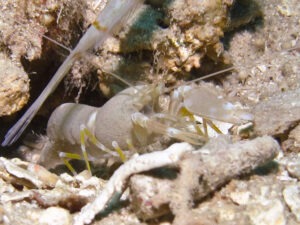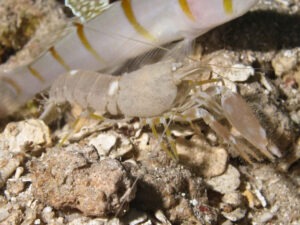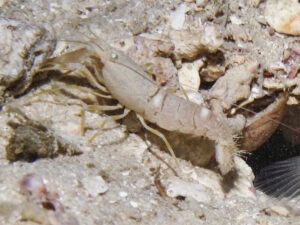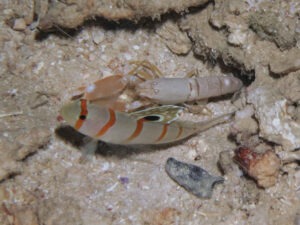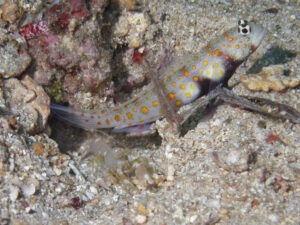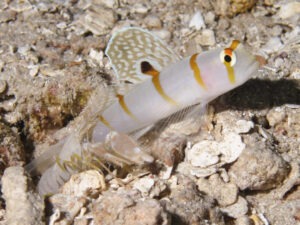Sandy Snapping Shrimp
Alpheus species 12
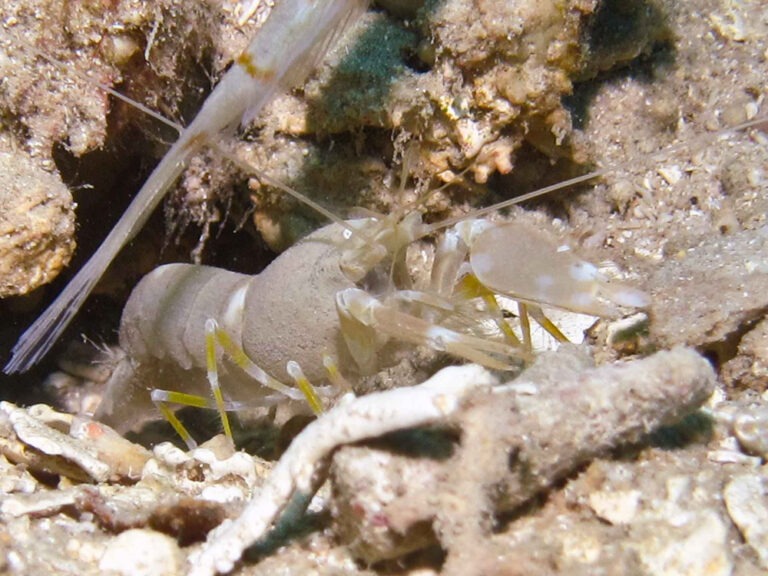
Sandy Snapping Shrimp
Alpheus species 12
undescribed
Description
Carapace: The carapace and abdomen of this shrimp are very plain, with no decoration. The colour is somewhere between grey and yellow-brown.
The abdomen is undecorated apart from white bands on segments 1 and 4. Tail plain with some setae.
The rostrum is grey as are the antennae
The pincers are the same colour as the carapace with scattered small white patches.
Identifying Features
Similar Shrimps
None.
Easily distinguished from other shrimps by the plain ochre-grey colour with white joints and bars on segments 1 and 4.
Nomenclature
No common or scientific name:
Humann & DeLoach (2010) p85 has two images of similar-looking shrimp and give them the names Alpheus species 3 and Alpheus species 4, with the common name “Undescribed”. Size to 3 cm. Papua New Guinea. We feel the images show the same species.
Hayashi & Shiratori (2003) Alpheus species 7 from Japan.
Ecology
HABITAT
Preferred substrate Coarse sand and coral debris at the base of small sheltered caves or overhangs in high profile coral reefs or drop-offs.
Depth range 5 to 20 metres
Proximity to reef Burrows are constructed on sandy patches within the reef itself
NATURAL HISTORY
This shrimp is very restricted in its shrimpgoby associations being nearly always associated with Amblyeleotris randalli, though it is seen from time to time with Amblyeleotris guttata, which has an overlapping habitat preference.
There is limited choice for burrow construction on the ledges and a lot of piled-up coral fragments are incorporated into them.
Distribution
Published distribution:
Papua New Guinea, Humann and DeLoach (2010). Malaysia and Flores, Indonesia, Kuiter and Debelius (2009).
Our records:
Solomon Islands; Kolombangara Island, Ndendo Island, Nggela Islands.
Associated Goby species
Associated Shrimpgobies (two species)
Usual association
Amblyeleotris randalli, Randall’s Shrimpgoby
Unusual associations
Amblyeleotris guttata, Blackchest Shrimpgoby
Videos
Amblyeleotris guttata, Blackchest Shrimpgoby (to be added)

